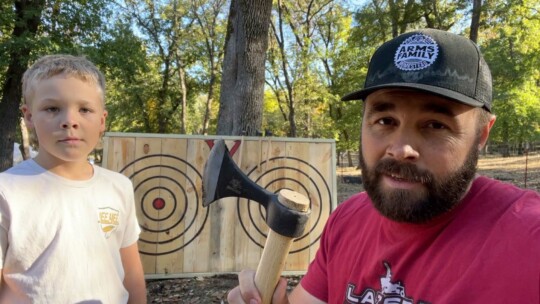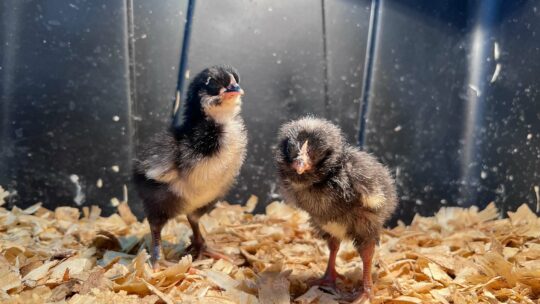While mowing trails isn’t your everyday backyard maintenance project, it’s standard fare for rural homeowners. Especially when you live on a wooded, 110-acre property like Daniel Arms of YouTube’s Arms Family Homestead. For a whole host of reasons, he’s spent a lot of time over the years making trails. Join Arms in this Backyard Life video, as he mows—and shows—his trails.
Why Not to Use a Tractor or Brush Hog
Arms chooses a mower over a tractor or brush hog to mow his trails. Arms points to his brush hog—specifically the part that should be the stump jumper—remarking, “This is why I’m not using it.” Last fall, while mowing the side of his driveway, he heard the crash of its main shaft breaking. When he inquired about having it fixed, he was told the repair would run about $1,500. So now, he’s using his Exmark zero-turn to maintain the trails, and says it’s getting the job done just fine.
Mowing Trails for Property Access
One of the primary reasons Arms mows his trails is simply to keep them clear and accessible. This not only enables his family to get out and enjoy the outdoors, but also provides better access to his property. The first trail Arms shows viewers is on the backside of his property. A few years ago, he had a friend come in with a bulldozer to push trees out of the way. Trails like this one, he says, give him and his family so much more access to their land than they‘d otherwise have. Case in point: other than walk-in access, he and his family hadn’t used this part of their land for over 20 years.
Mowing Trails for Wildlife
Next, Arms heads to his food plot adjacent to an area he regularly deer and turkey hunts. Two years ago, he cut a trail through a stand of timber to provide him—and some especially lazy deer and turkey—better access to the area. (Arms says they’d rather walk along an open path than through brush.) Arms plants wheat and oats, as well as other food-plot mixtures, along the path to give the deer and turkeys something to feed on, as well as a nice path to use. “If I can give them—kind of like the Wizard of Oz—the yellow-brick road to come right down into the field where we’re hunting, then I know I’m increasing the chances of my kids, friends, or me being able to harvest a deer,” he explains.
Arms planted a nice, green clover food plot in a 4-acre field last fall, but explains that he’s not going to mow the entire plot. It’s late spring and the turkeys have gone to nest, and have probably already hatched their eggs. But, a young poult, says Arms, can’t walk through the plot’s three-foot grass very well. So, he mows his trails at a high deck setting to provide them with a path that’s easy to follow. Doing so will also provide them with taller grass to hide in if/when predators are in hot pursuit.
Mowing Trails for Fire Breaks
Arms lives in what’s referred to as the Cross Timbers region of Oklahoma. As the song goes, says Arms, “Oklahoma, where the wind comes sweeping down the plains?” Well, Arms isn’t exactly on the plains, as this region’s just south of the Great Plains, but much of the area didn’t used to have quite so much timber.
It’s a well-known fact, says Arms, that the Native Americans used fire to control vegetation. They’d use fire to burn off old grasslands, then bring in bison to provide food for their tribes. Today, however, Arms simply uses fire as a tool to control brush, weeds, and other property debris.
One of Arms’ favorite property trails traverses a ridge down to another nice food plot he’s planted. Arms says the trail also serves as a fire break, something that’s needed for smaller, controlled burns. While these trails are great for wildlife, they also allow him to burn 5 to 10 acres without the fear of them getting out of control. Rather than burning every year and risk pushing too much wildlife out, he chooses to burn one section each year, then an adjacent plot the next. This encourages vegetation growth at different stages of his property’s wildlife growth.
Every year, Arms spends a tremendous amount of time caring for his property—property that’s also close to a National Park visited and enjoyed by many others who don’t have land of their own. Arms feels blessed to live on such a large plot of land, and that it’s his responsibility to care for, and maintain, it to the best of his ability. In addition to hunting and fishing, Arms also enjoys the nature-watching opportunities it provides him and his family. “I love getting out and enjoying my property. And, having a piece of equipment that helps me make it look its best, just makes me happy!”



